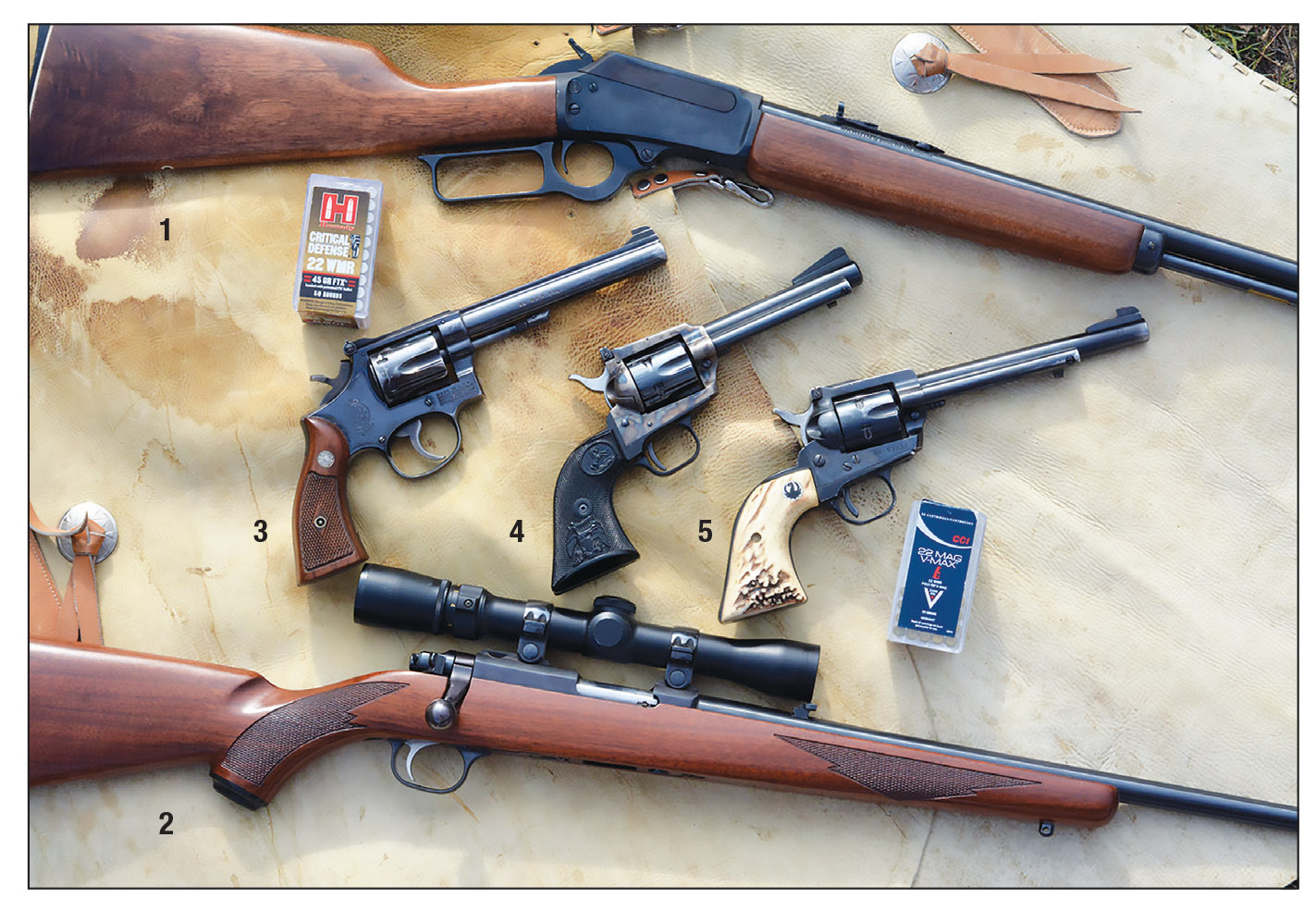
In addition to rifles such as the Marlin Model 1894 (1) and Ruger 77/22, (2) the 22 Magnum has been offered in many popular sixguns including the (3) Smith & Wesson Model 48, (4) Colt New Frontier 22 and (5) Ruger Single-Six.
The 22 Winchester Magnum Rimfire (WMR), or more commonly known as “22 Magnum,” was formally introduced in 1959, although Winchester did not offer rifles until 1960, with the introduction of the Model 61 Magnum pump-action rifle. Marlin was the first to offer a rifle with the Model 57M Levermatic, while Colt quickly offered the inexpensive bolt-action, single-shot 1-22 rifle, but Smith & Wesson, Ruger and Colt almost immediately began offering 22 Magnum sixguns – many with dual cylinders that accommodated the use of 22 Long Rifle cartridges in the same gun. Despite the high cost of ammunition when compared to the 22 Long Rifle, the 22 Magnum was instantly popular due to its notable performance advantages. I first acquired a Winchester Model 9422M 22 Magnum in 1972 and over the past 50 years, I have owned many rifles and sixguns in this caliber and it remains a personal favorite. It is highly useful as a sporting cartridge for hunting varmints and small game, but also for commercial applications. Plus, with today’s loads, it offers greater range, improved accuracy, greater versatility and is more useful than ever.
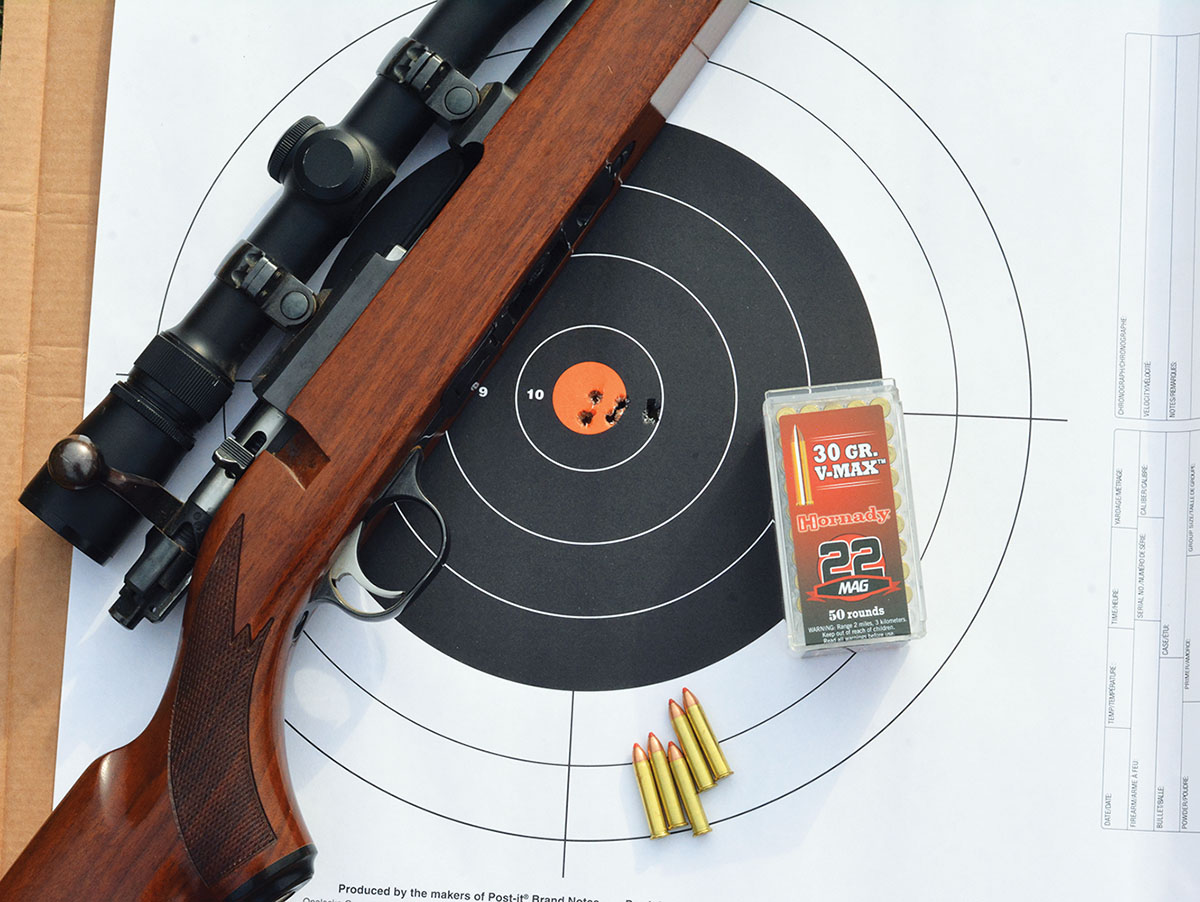
The 22 Magnum offers accuracy and is very effective on pests and varmints.
The 22 Magnum is based on a lengthened 22 Winchester Rimfire (WRF) that dates back to 1890, but rather than a lead bullet, it features a jacketed bullet and achieves much greater velocities. The case is larger in diameter than the 22 Long Rifle, as it measured around .242 inch, while the Long Rifle measured .225/.224 inch (tapered), so 22 Magnums cannot be chambered in a Long Rifle firearm. Rather than a heel-type outside lubricated bullet that is used in the 22 Long Rifle that is more or less the same diameter as the case, the 22 Magnum is inside lubricated. As a result, it is a much more robust cartridge that is not susceptible to dirt and neither is it easily damaged from normal wear and use. In other words, Long Rifle bullets are easily damaged, the lube worn off, etc., which can affect accuracy and performance, but 22 Magnum bullets are protected by the case (at least the bullet’s shank that contacts the rifling). For outdoorsmen, this is an especially important feature. Interestingly, the 22 Long Rifle and 22 Magnum share the same chamber pressure figure at 24,000 psi. However, the bullet diameter for the 22 Long Rifle is around .223 inch, while the 22 Magnum is .224 inch. This explains why most (but not all) revolver manufacturers use a larger groove diameter barrel for convertible sixguns.
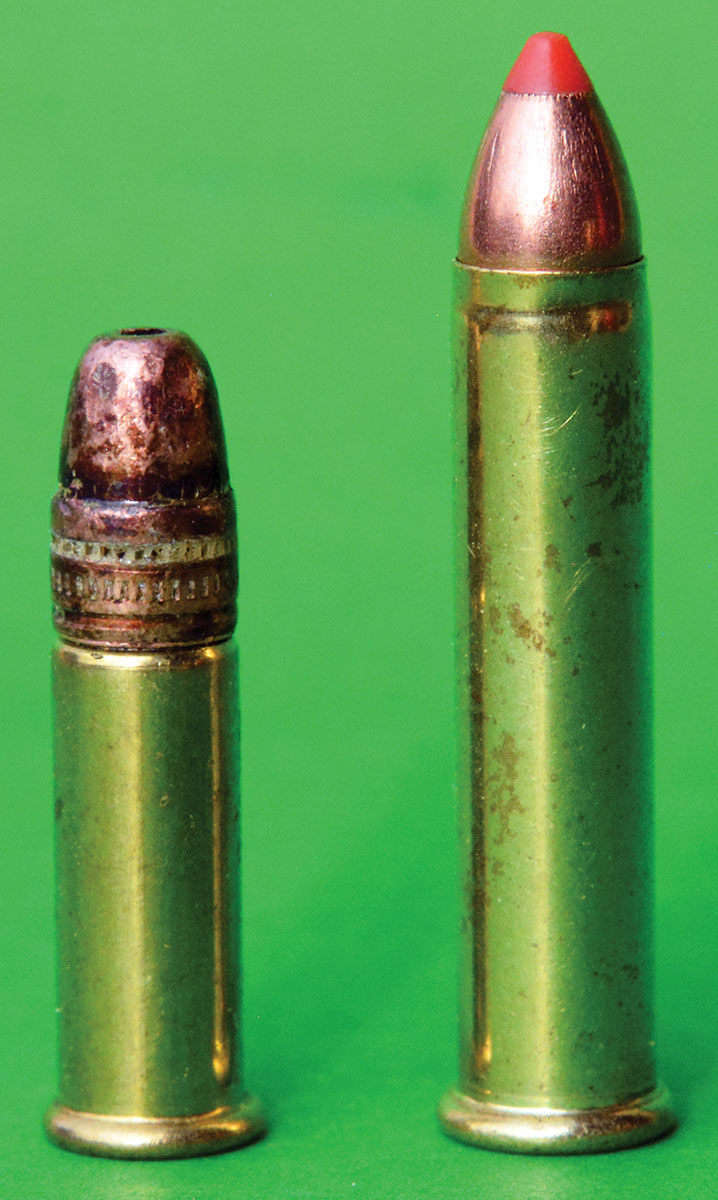
The 22 Long Rifle (left) features a heel-style bullet with outside lubrication, while the 22 Magnum (right) features an inside lubricated (jacketed) bullet and offers notably greater velocity.
Early listings referenced the 22 WMR as the “22 W.R.F. Magnum H.P” but it also became known as 22 WMRF and 22 MRF, but it is industry standardized today as 22 WMR. Original 1959-era ballistics list a 40-grain jacketed hollowpoint (JHP) bullet at 2,000 feet per second (fps) and boasted of a velocity of 1,390 fps at 100 yards, which is a substantial gain over 22 Long Rifle “high-speed” loads that typically push the same bullet weight to around 1,300 fps (varies by manufacturer). This velocity advantage extended the effective range of the 22 Magnums on pests and varmints to at least 125 yards and even further when used in an accurate rifle and in the hands of a skilled shooter. Regarding terminal performance on foxes, coyotes, badgers and other similar-sized varmints and pests, the JHP bullets offer significantly greater shock and produce a notably larger wound channel. (Note: Today, various 40-grain bullets are generally listed between 1875 to 1910 fps.)
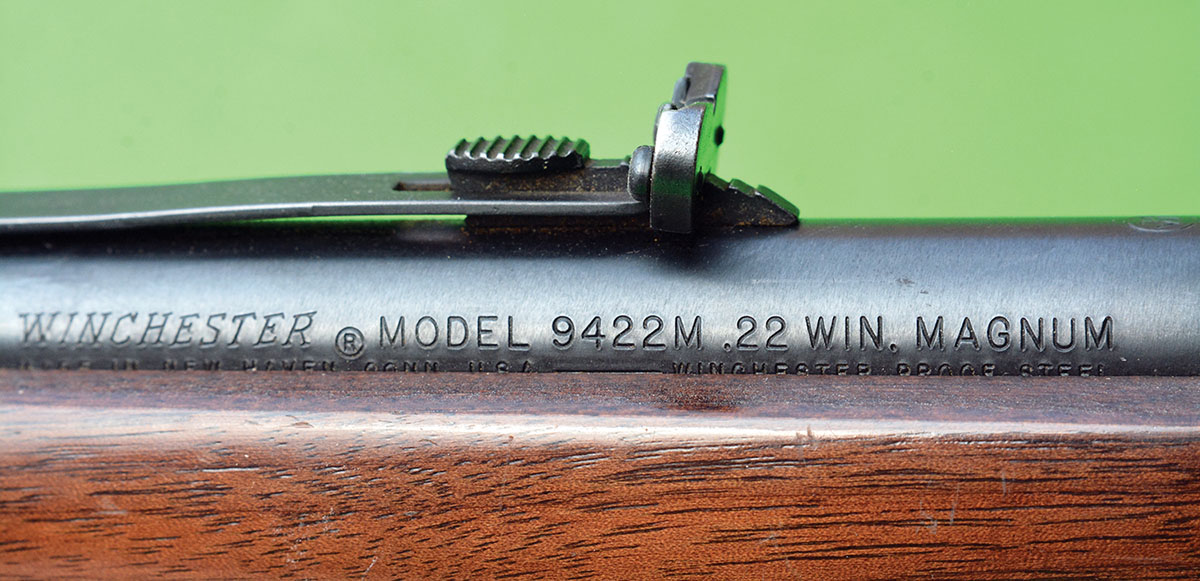
Brian’s first 22 Magnum rifle was this Winchester Model 9422M, which proved accurate, reliable and remains a favorite.
Cascade Cartridge Incorporated, or CCI, was quick to offer 22 Magnum loads to compete with Winchester, which more or less shared the same ballistics. One load that both companies soon offered was a 40-grain solid at the same 2,000 fps. Back in my early years when I ran a trapline to support my handloading and shooting habits, this load proved very useful as it did not leave large exit holes that had to be sewn up prior to the fur buyer picking up the goods. But this load has also become widely popular among commercial mobile livestock butchers. Over the past several years, due to supply shortages, I have sold many head of prime steers (weighing 1,500 to 1,800 pounds) for slaughter to private buyers. At least six different mobile butchers have been hired and in all but one instance, their rifle of choice has been chambered in 22 Magnum and used in conjunction with 40-grain solids from both CCI and Winchester. I have seen the 40-grain full metal jacket (FMJ) bullets penetrate the incredibly heavy skulls of mature range bulls (hamburger only!) weighing in excess of 2,000 pounds. The 22 Long Rifle with its pure lead bullet cannot boast of any such feat, as they tend to simply flatten on the thick skulls. (Note: The one butcher that was not using a 22 Magnum was using his grandfather’s Marlin 1894 chambered in 25-20 handloaded with cast bullets, because he could not get 22 Magnum ammunition during COVID-19 shortages.)
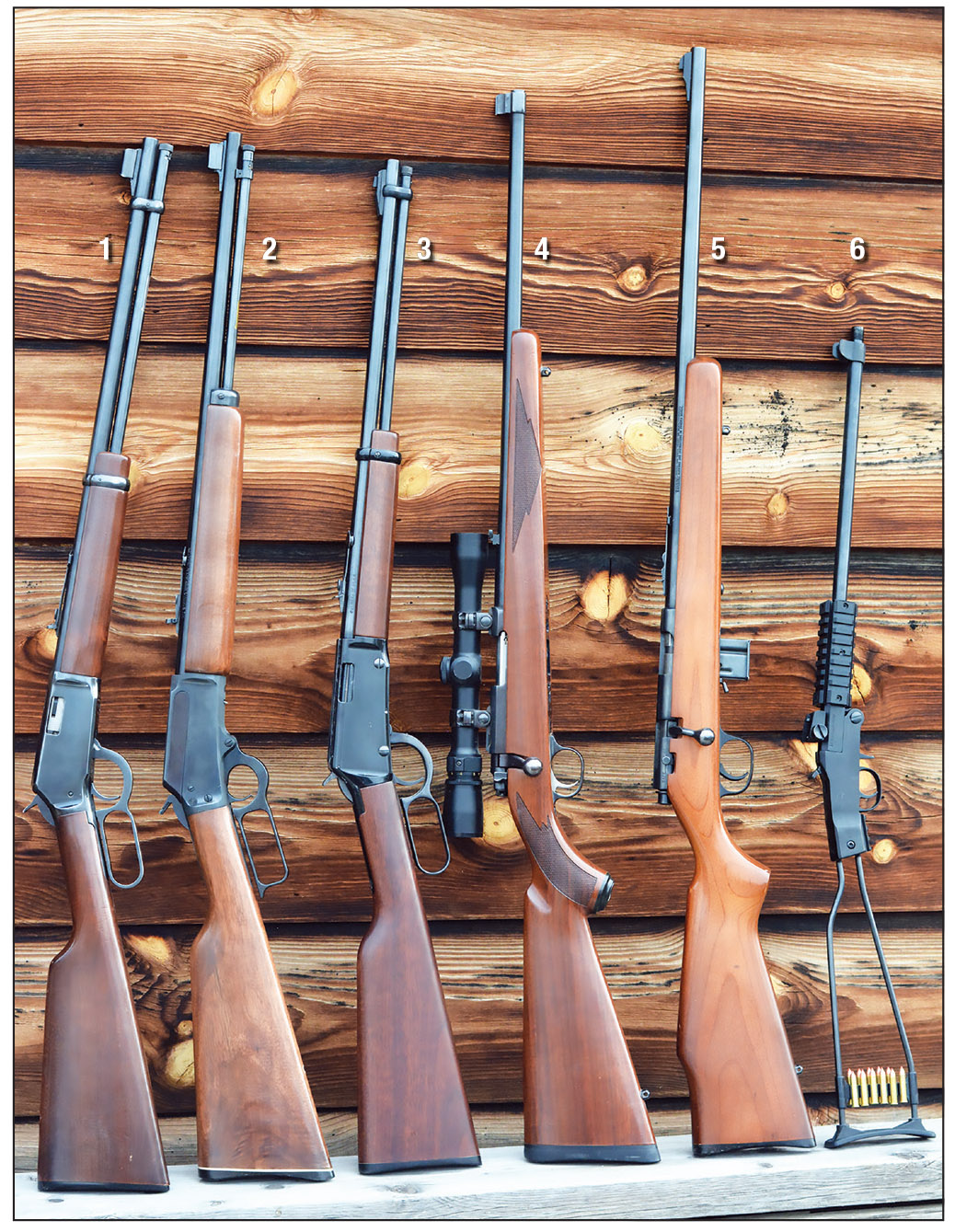
The 22 Magnum has been offered in many different rifles. A few examples include: (1) Winchester 9422M, (2) Marlin 1894M, (3) Henry Lever Action H001M, (4) Ruger 77/22, (5) Marlin 925M and (6) Chiappa Little Badger.
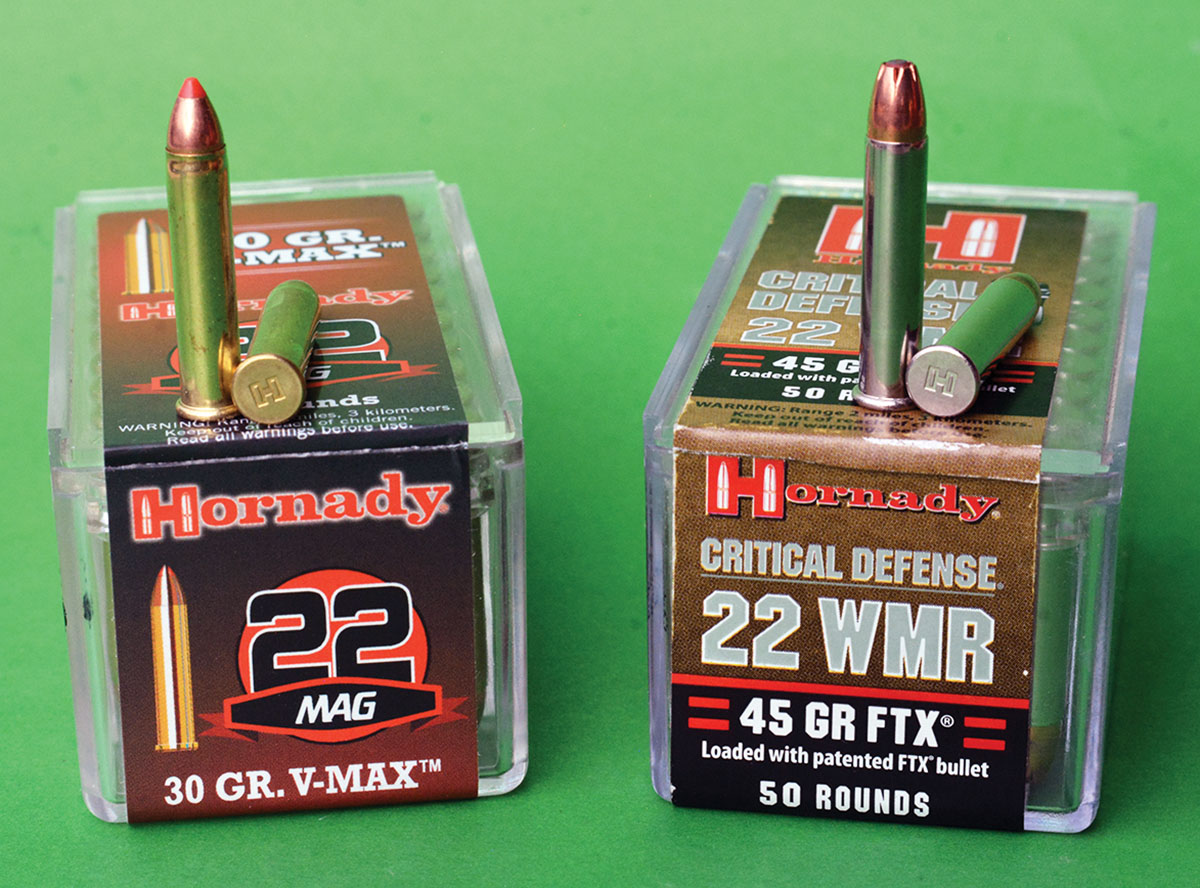
Hornady offers purpose specific 22 Magnum loads that include the 30-grain V-MAX spitzer bullet at 2,200 fps and the Critical Defense FTX bullet at 1,700 fps.
In the past few decades, ammunition companies began offering lightweight bullets that typically weigh between 30 and 34 grains, while velocities are bumped to as high as 2,200 fps. A couple of personal favorites include the Hornady 30-grain V-MAX bullet that boasts of a spitzer profile and a plastic tip to increase ballistic coefficiency (BC). This load shoots very well in every rifle that I have tried it in, but is also highly destructive on pests and varmints up to the size of coyotes. Due to its greater muzzle velocity and higher BC, the effective range is increased. A load that exactly mirrors the performance of the Hornady V-MAX is the CCI 30-grain poly-tip V-MAX. Hornady also offers a Critical Defense load that contains a 45-grain FTX at 1,700 fps, which serves to further increase the versatility of the cartridge. There are many additional 22 Magnum loads that serve to further increase the versatility of this fine cartridge (that can be seen in the accompanying table).
Today, the selection of 22 Magnum rifles (and handguns) is huge and includes a variety of action types and price ranges. Due to the higher costs of ammunition, it is not generally used as a plinker; rather it is an outstanding choice when greater range, terminal performance and versatility is needed from a rimfire cartridge. Interestingly, the 22 Magnum was the only successful rimfire cartridge introduced in the twentieth century. Its popularity remains very high due to its outstanding merits. There will always be room for one on my rifle rack.
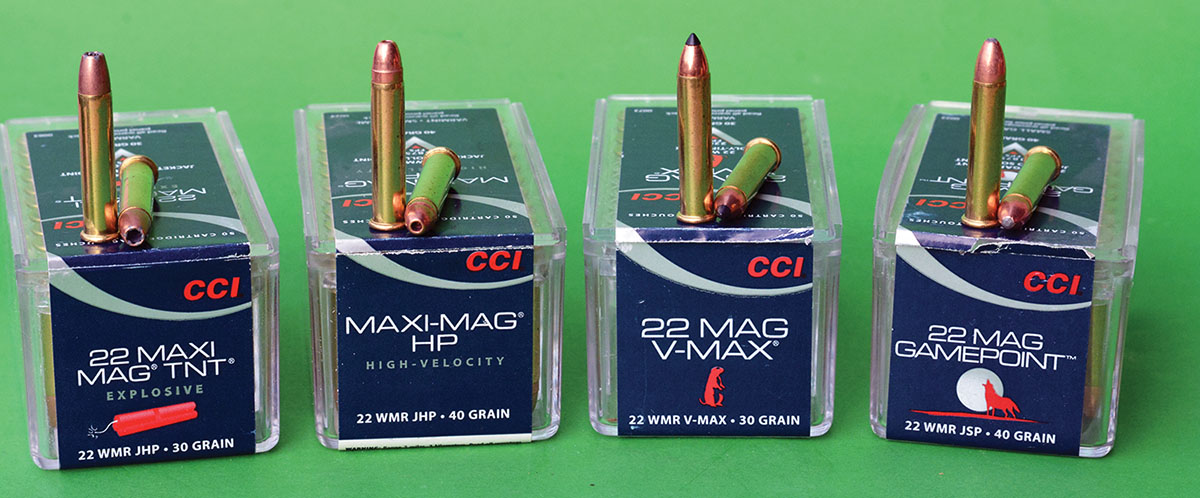
CCI offers many outstanding 22 Magnum loads that serve to increase versatility.







.jpg)


